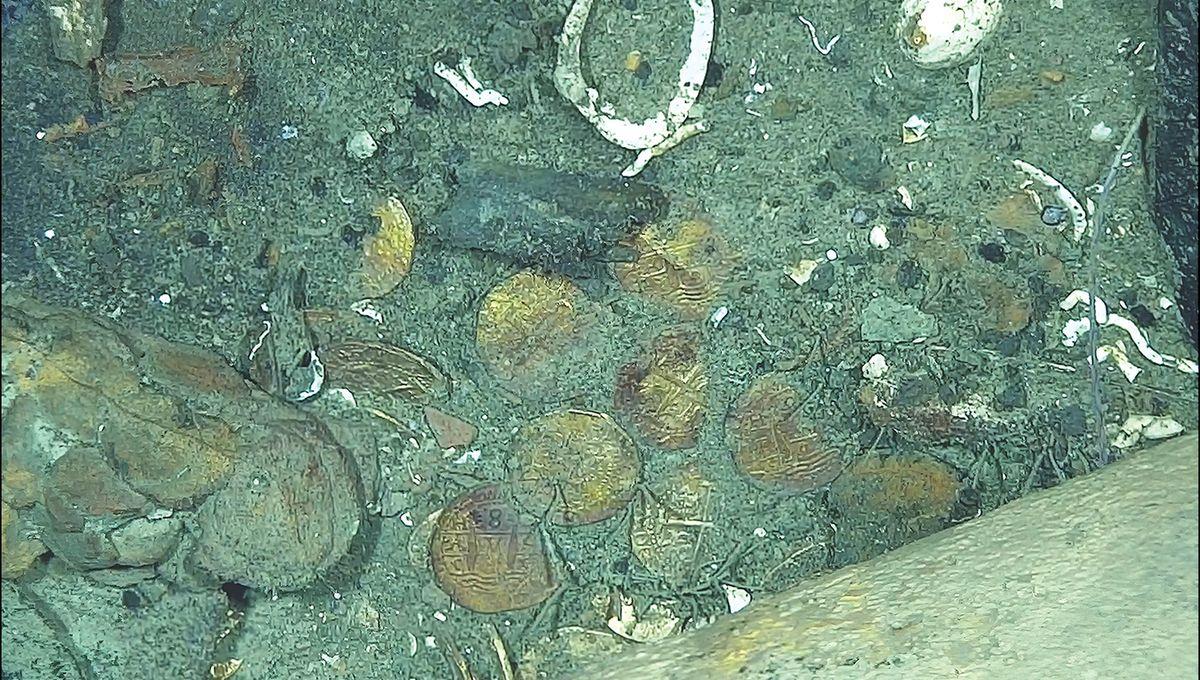Gold Coins Among The San José, AKA "World's Richest Shipwreck," Confirm Its Identity

Gold Coins Start To Emerge Among The "World's Richest Shipwreck" In Colombia
A wealth of treasure onboard the “world’s richest shipwreck” is starting to be revealed. Marine archaeologists and the Colombian Navy have recently been studying the sunken remains of a ship that's hoped to be the 18th-century Spanish galleon San José. Not only did their work confirm it was the famous ship, but it’s starting to uncover some of its sought-after relics.
The San José was a galleon treasure ship tasked with transporting large quantities of looted treasures from South America on behalf of the Spanish Navy. Stretching around 45 meters (150 feet) from bow to stern, historical records suggest it was sunk in 1708 amid a battle in the War of the Spanish Succession. Known as the "holy grail" of shipwrecks, it’s sometimes cited that upwards of $17 billion worth of relics are among its ruins, although some believe that figure is overinflated to attract interest in the submerged ruins. Regardless, many scholars are confident the seabed around the shipwreck is loaded with a wealth of physical relics and historical value. The Colombian government confirmed they had located the San José off their northern coast in 2015, sparking a deeply complicated “custody battle” of the shipwreck’s treasure. In a new study, the authorities have begun analyzing a trove of images captured by remotely operated subs, offering the clearest look yet at the legendary shipwreck. Three main areas of coins were discovered among the shipwreck, shown here. Image credit: D Vargas Ariza et al./Antiquity/2025 Most importantly, their high-res digital images show that the coins onboard the ship were minted in the year 1707 in Lima, the modern capital of Peru. Furthermore, it’s known that the San José was involved in a mass shipment of treasure that was dispatched from Peru that year. All of this strongly suggests that the identified shipwreck off the coast of Colombia is, indeed, the famed Spanish ship that sank in 1708. The study concludes: “The San José Galleon is the only ship that matches these characteristics.” Illustration reconstructing one of the coins from the shipwreck, indicating features that were used to identify the year, minting location and more. Image credit: D Vargas Ariza et al./Antiquity/2025 “Coins are crucial artefacts for dating and understanding material culture, particularly in shipwreck contexts. Hand-struck, irregularly shaped coins – known as cobs in English and macuquinas in Spanish – served as the primary currency in the Americas for more than two centuries,” Daniela Vargas Ariza, study author from the Escuela Naval de Cadetes Almirante Padilla and Instituto Colombiano de Antropología e Historia - ICANH, said in a statement sent to IFLScience. “This case study highlights the value of coins as key chronological markers in the identification of shipwrecks. This find presents a rare opportunity to explore an underwater archaeological site and deepen our understanding of eighteenth-century maritime trade and routes,” Vargas Ariza added. As for the estimated billions of dollars in gold, it has yet to be recovered or even identified. The study did not disclose how much treasure or other artifacts may be aboard, but the state-led investigation continues to roll on... The study is published in the journal Antiquity. and starboard (a) sides of the stern section. They are scattered in groups surrounded by artefacts from the cargo, artillery and everyday life a.jpg)
 notes, the well-preserved features may suggest that reverse dies were consistently us.jpg)


